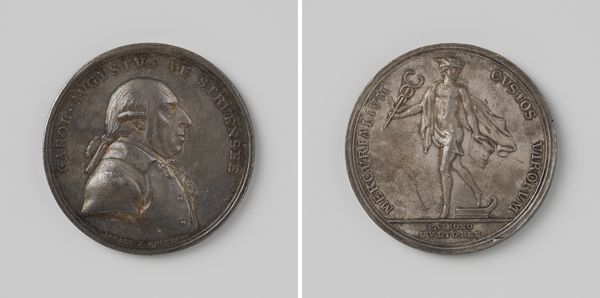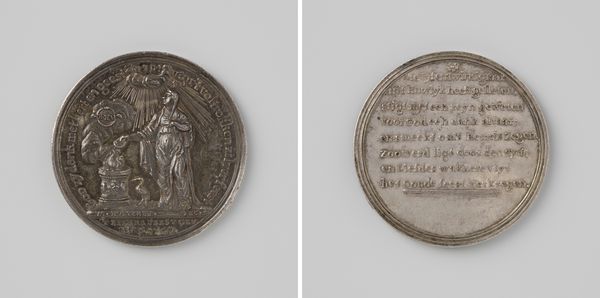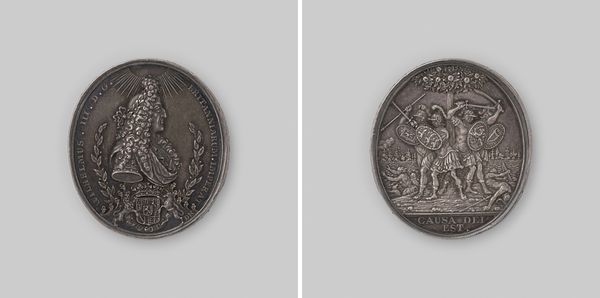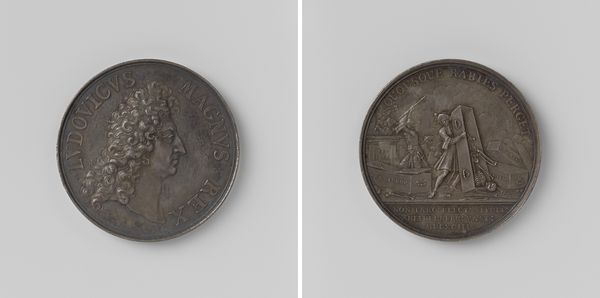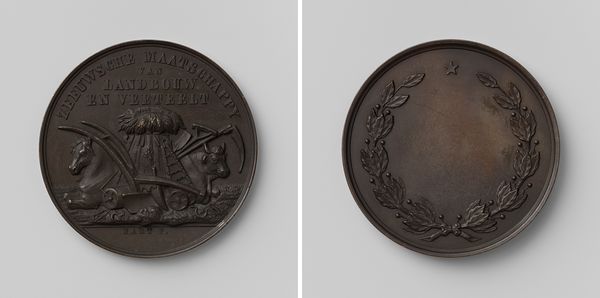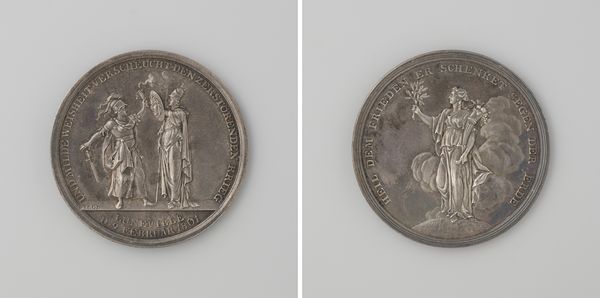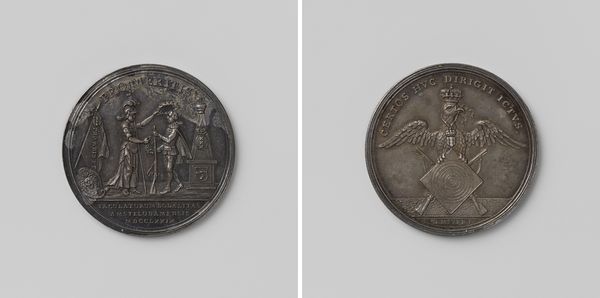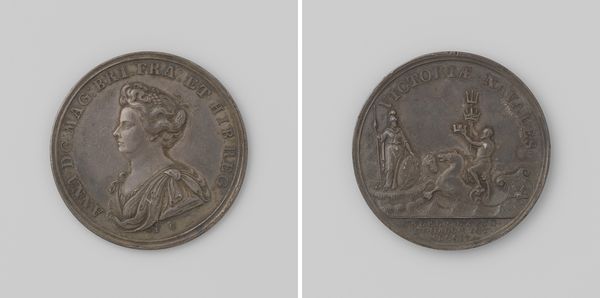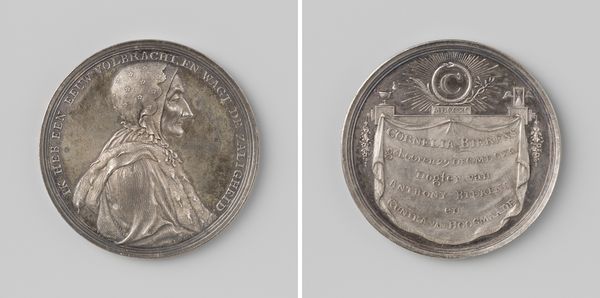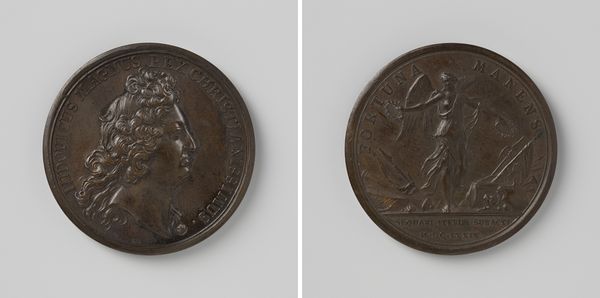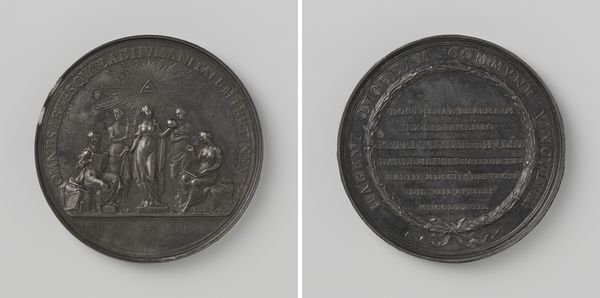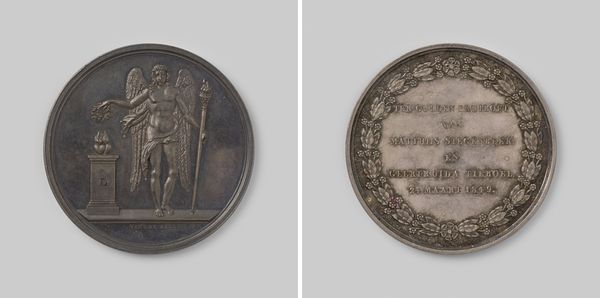
metal, relief, sculpture
#
portrait
#
neoclacissism
#
allegory
#
metal
#
stone
#
sculpture
#
relief
#
classical-realism
#
sculptural image
#
sculpture
#
statue
Dimensions: diameter 5.5 cm, weight 61.14 gr
Copyright: Rijks Museum: Open Domain
Curator: Look at this interesting example of neoclassical relief, "Genootschap tot Bevordering der heelkunde," or "Society for the Promotion of Surgery" created around 1790 by Johann Heinrich Schepp. Editor: It’s beautiful, a somber stillness radiates from the silver-toned metalwork. There is a central female figure with a subtle melancholic pose. Curator: Let's break down the symbolism embedded within this work. Notice how Schepp employs a classical style to portray a surgical society. We see Hygieia, the Greek goddess of health, in her emblematic representation. She offers a serpent a libation from a patera. This can be linked back to practices associated with Aesculapius. Editor: Yes, the imagery feels significant, evoking ideas around ritual and power, though in this case a surgical collective rather than the single healer of myth. Are we meant to align medicine with a form of civic virtue? Curator: Exactly! These societies were deeply engaged with Enlightenment ideals of progress and public service, so there is that relationship between institutional representation and service. Editor: Also consider the setting; a fluted column, draped cloth, and the altar all hint at an enlightened dedication to improving society. And the radiating lines evoke ideas associated with truth, reason and intellectual brilliance. What do you think it communicated to the Dutch medical establishment at the end of the eighteenth century? Curator: The Society’s pursuit of progress by alluding to the legacy of the Greek and Roman worlds, particularly because surgeons were then fighting for social and intellectual standing. Editor: Fascinating. The artist skillfully combined elements to produce a portrait that’s at once an artwork but that operates as an appeal for surgical advancement and social progress in a very specific political and cultural framework. Curator: Precisely. It reveals the evolving understanding of the medical establishment within Dutch society during this period of transformation and is reflective of a burgeoning scientific field, at that. Editor: This makes me see its significance on a new level. Beyond aesthetics, its context paints a very interesting picture of medicine and its relation to society.
Comments
No comments
Be the first to comment and join the conversation on the ultimate creative platform.
